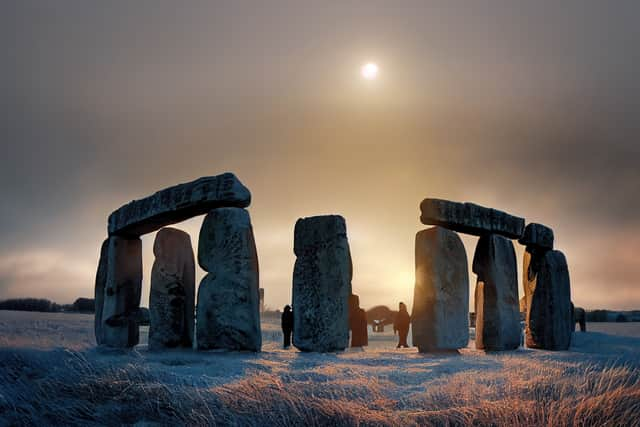Winter Solstice 2022: when is it, what is it, and how many hours of daylight will the UK get
and live on Freeview channel 276
Winter Solstice is here, and marks the shortest and darkest day of the year. The event signals the start of winter, although the bitter temperatures and heavy snowfall across the UK in recent weeks would suggest the notoriously coldest of the four seasons arrived a while ago.
Winter solstice is a key part of many cultures around the world and celebrated in many ways. It is associated with rituals from the earliest human times. For example, stargazers rejoice at the extra time with the night sky as it brings a better opportunity to spot astronomical events happening above us.
Advertisement
Hide AdAdvertisement
Hide AdSo, what time is the winter solstice and what is it? Here’s everything you need to know about the event.
When is the Winter Solstice?
Winter Solstice will take place on December 21. According to Royal Museum Greenwich, the actual moment of the solstice in 2022 will occur at 9.48pm GMT in the UK
How many hours of daylight will the UK have on the Winter Solstice?
According to Royal Museum Greenwich, the UK’s capital London will see 7 hours, 48 minutes and 42 seconds of daylight. The sun is expected to rise at 8:03am and set at 3:53pm.
This will differ across places in the UK, for example the further north you go the amount of daylight gets smaller. People in Edinburgh will see just 6 hours, 57 minutes and 37 seconds of daylight, with a 8.41am sunrise and 3.39pm sunset.
What is the Winter Solstice?
Advertisement
Hide AdAdvertisement
Hide AdThe winter solstice is also known as the hibernal solstice, and occurs when either of Earth’s poles reaches its maximum tilt away from the sun. In the Northern Hemisphere the Winter solstice marks the 24 hour period with the fewest hours of daylight. The solstice also marks the first day of winter in the astronomical calendar, whilst in the meteorological calendar, we are already three weeks into winter.
The summer solstice falls around June 20 every year and has become synonymous with Stonehenge and paganism, it denotes the longest day of the year and first day of summer under the astronomical calendar.


How is the Winter Solstice celebrated?
Thousands of pagans continue to gather every year at Stonehenge, and it is thought that the iconic stones were carefully placed to frame the sunset on the winter solstice.
The origins of Christmas trees and wreaths can be found in the 12-day pagan holiday of “Yule”, which centred around the solstice.
Advertisement
Hide AdAdvertisement
Hide AdCeltic Druids would acknowledge the winter solstice by hanging mistletoe and lighting a yule log to fend off darkness and evil spirits.
Many look at Winter Solstice as simply the darkest day of the year, but it brings a great opportunity to get a good look at the night sky above us. People travel all over to get to the darkest points of the world to see the night sky put on a show.
